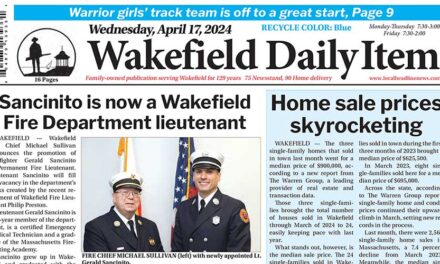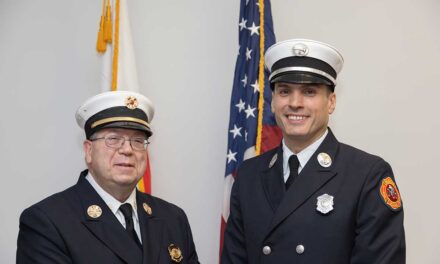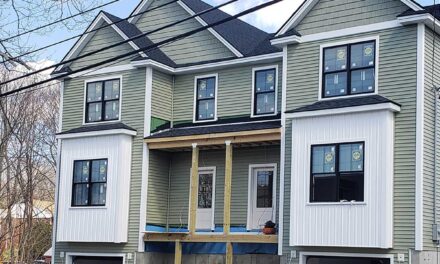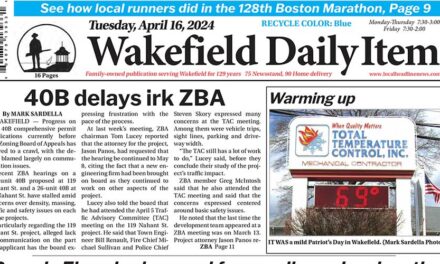Published March 3, 2021
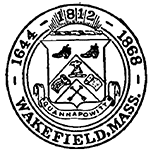
By MARK SARDELLA
WAKEFIELD — Due to the size and scope of the area involved, the Conservation Commission will hire a consultant to assist them in confirming the location of wetland areas following a presentation last week by an environmental scientist retained by Northeast Metro Tech.
Andrea Kendall of LEC Environmental Consultants appeared at last week’s Conservation Commission meeting to present an Abbreviated Notice of Resource Area Delineation on behalf of the regional vocational school located at 100 Hemlock Rd.
Northeast Metro Tech officials plan to recommend building a new vocational school, putting athletic fields where the current facility stands and building a new access road from Farm Street (near June Circle) that would loop around and eventually connect to the grounds, in addition to the present entrance on Hemlock Road.
But that’s not what last week’s Conservation Commission hearing was about, although there appeared to be confusion among some abutters as to the purpose of last week’s hearing.
Kendall presented a topographical map of the 60 acres in question and pointed out bordering vegetated wetlands, isolated wetland areas, intermittent streams and other related features on the map. The area under consideration includes the present site of the school and extends out to Farm Street to the east of June Circle.
Kendall identified bordering vegetated wetlands to the north associated with the Saugus River, a wetland system to the west and a larger bordering vegetated wetland to the south, near Farm Street. No portion of the site is located within the 100-year floodplain, according to the LEC analysis.
Any work proposed within these resource areas and/or their corresponding buffer zones will require compliance Massachusetts environmental regulations and filing for the appropriate permits with the Wakefield Conservation Commission and/or the Massachusetts Department of Environmental Protection, and may require additional wetlands permitting depending on the extent and scope of work.
The purpose of last week’s hearing was to allow the Conservation Commission to determine if the wetland delineation done on behalf of the applicant (Northeast Metro Tech) was accurate.
Commissioner Jim Luciani asked if the resource areas were still marked with flags.
Conservation Agent Elaine Vreeland said that she had walked a portion of the site recently and found flags in place in some areas but not others. Due to icy conditions, she said that she was unable to reach more remote areas of the property on foot. She said that she planned to go back this week with Kendall and make sure all the flags are in place.
Typically the Conservation Agent along with commission members would walk the site to verify the location of resource areas. But due to the size of the site, Commissioner Jim Luciani suggested that the ConCom should hire an independent consultant to go out and confirm the location of the wetlands. Other commissioners agreed. In such cases, the applicant is expected to pay for the town’s consultant.
Several residents of June Circle asked about the impact on their neighborhood of building the school and a new access road behind their homes.
But Conservation Commission Chairman Bob Romano explained that the purpose of the hearing was simply to identify environmentally sensitive areas on the property so that those areas can be protected.
“There is no project in front of us,” he said, explaining that the wetland delineation was just the first step in the process. Once a Notice of Intent is filed, he explained, the commission will begin to look at how any proposed work could impact the wetland areas.
In response to some other questions from abutters, the commission agreed to put all available materials from last week’s hearing on the Conservation Commission’s web site.
Over the last year, Northeast Metro Tech has been working to develop options that would solve the space, capital and maintenance issues of the more than 50-year-old building.
The project team has continued to work its way through the Massachusetts School Building Authority (MSBA) design process and is expected to soon finish the Feasibility Study phase. The project achieved a major milestone in December by submitting the Preferred Schematic Report (PSR), the second of six design packages, to the MSBA.
The Preferred Schematic Report looked at several options, including repair of the existing school, addition/renovation to the existing school and new construction on site. Per the School Building Committee and project team’s recommendation, the report concluded by recommending that the project proceed with new construction.
The Conservation Commission hearing was continued to March 11 when the ConCom is expected to review a list of possible consultants to do a peer review of the wetland delineation.

